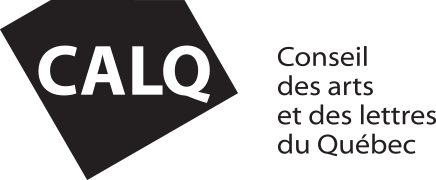![[ Fig. 01 ] <i>Pretty Ribbons</i>, 1993.](/sites/default/files/styles/fixed_width_480/public/advancedpublications/text/13181/x25cumminguntapril24199219920.jpg,qitok=L3ID21TB.pagespeed.ic.xhFfa4OsIs.jpg)
Introduction
Body-to-Body: the Works of Donigan Cumming is the first in a new series of digital publications edited by Vidéographe. Compiling the 26 videos that Donigan Cumming has produced to date, as well as images of his installations, photographs, drawings and collages, this publication updates and completes the 2005 DVD boxset Controlled Disturbance.
We wanted to present the different facets of Cumming’s practice in order to highlight the common threads that unite his various bodies of work. Privileging an interdisciplinary approach, we have invited authors Zoë Tousignant and Fabrice Montal, a curator and programmer respectively, to examine his work from the perspectives of art and film history. We decided to use this web-based format because it allowed us to showcase a wide range of different type of documents, including texts, videos and images, sound works, scripts and an audio interview with Cumming by Jean Perret, a cinéma du réel theorist.
![[ Fig. 02 ] <i>Too Many Things</i> (video still), 2010.](/sites/default/files/styles/fixed_width_480/public/blocks/79514/xtoomanythings.jpg,qitok=7vgjk5IR.pagespeed.ic.AqPIOcNVVE.jpg)
In Refuse and Refusal in the Art of Donigan Cumming, Tousignant approaches the artist’s work chronologically, putting the cumulative nature of Cumming’s works into perspective and drawing our attention to the profusion of elements that make up each project. Like the “characters” who reappear in different works over periods of 20, 30 or 40 years, Cumming’s footage can be seen in multiple videos and collages, exhibitions turn into artist’s books, and photographs become drawings. Tousignant portrays Cumming’s artistic practice as being in a state of perpetual proliferation. She observes that this is more than merely a method of working: in constantly recuperating and transforming his own material, the artist mischievously and tenaciously thwarts the viewer’s expectations.
![[ Fig. 03 ] <i>Out of Kerr’s Suitcase</i> (video still), 2016.](/sites/default/files/styles/fixed_width_2000/public/blocks/79516/09outofkerrssuitcasedc.jpg?itok=xwEjRhI2)
In Donigan C. and the riches of indigence, Montal situates Cumming’s work in the artistic and socio-political contexts in which it is rooted. The author also identifies the strategies that Cumming employs to vigorously critique so-called documentary truth. He demonstrates that the artist uses improvisation and the distancing effect to reveal that documentary productions are, in fact, staged and that they are too often based on power relationships between the observer and the observed. These power relationships are simultaneously exposed and critiqued by the shamelessness of the relationship between Cumming and his “protagonists”.
![[ Fig. 04 ] <i>Fountain</i> (video still), 2005.](/sites/default/files/styles/fixed_width_2000/public/blocks/79518/x06906150a-24-10exception.jpg,qitok=EhigU1Yr.pagespeed.ic.yn1SbMylzx.jpg)
Over the course of his interview with Cumming, Perret highlights the energy that activates his work. This is made palpable by the strong physical presence of the artist in his videos. We hear his deep breathing and his exuberant laugh. The camera continuously films the artist’s interaction with his protagonists. Cumming compares this impatient and anxious camera to an animal that he holds in his hands and he sees no limits to what it can look at. Perret believes strongly that in showing what is never usually shown and in refusing to conform to the “dictatorship of images” established by consumer society, Cumming is making a political gesture.
![[ Fig. 05 ] <i>Culture</i> (video still), 2002.](/sites/default/files/styles/fixed_width_2000/public/blocks/79520/nosubject2020-04-2613v2.png?itok=f1_vBbK-)
The texts by Montal and Tousignant, the interview with Perret, and the documents that have been selected for this publication give us insight into Cumming’s creative fervor and his desire to destabilize the viewer and to ceaselessly draw from the margins of society, of what is watchable and of his own works. We are also struck by the artist’s continued commitment to his protagonists, with whom he has maintained intimate, loyal and at times strained relationships. Even when his images of them are crude, sometimes to the point of revulsion, Cumming brings to them an affection that builds over time and that, as with all relationships, moves towards death in anger and joy.
![[ Fig. 06 ] <i>My Dinner with Weegee</i> (video still), 2001.](/sites/default/files/styles/fixed_width_480/public/blocks/79522/xellemartincorbin.jpg,qitok=HoXdlOOY.pagespeed.ic.g37DpS7NnV.jpg)







![[ Fig. 01 ] <i>Reality and Motive in Documentary Photography</i>, Part 1, 1986.](/sites/default/files/styles/publication_teaser/public/advancedpublications/text/13182/x02cumminguntjune919821982.jpg,qitok=SRSi7FvT.pagespeed.ic.DjSzwhKwPL.jpg)